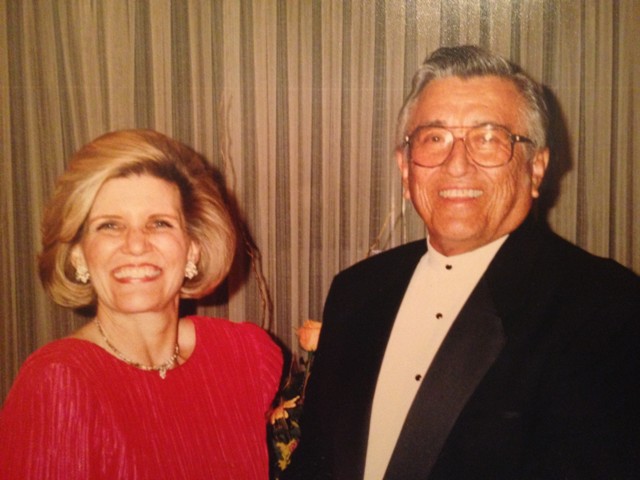
Former Scottsdale Mayor Sam Campana and Bennie Gonzales circa 1998. Photo: Sam Campana
Humble Foundations, Strong Structures
Gonzales was born in a one-bedroom farmhouse with an outdoor bath and toilet at 20th Street and Osborn in what was then hinterland Phoenix. Growing up, he worked with his uncle, Santiago (S.L.) Cahill, a contractor who built the Heard Museum, the Arizona Biltmore and Camelback Inn. One story he enjoyed telling was how he helped to make bricks on the jobsite for the Biltmore when he was just a child, using sand from the adjacent canal.
He graduated from what was then Arizona State Teachers College, now Arizona State University, where he later guest lectured. When he became a registered architect in Arizona, he was one of the first Mexican-Americans to do so.
He also completed a year of postgraduate study at the University of Mexico in Mexico City, where he was inspired by Aztec, Toltec and Mayan pyramids as well as the work of modern Mexican architects. Later, Native-American pueblos and cliff dwellings and adobe structures in the American Southwest also influenced his work.
His funeral service, attended by BJ and his sister, Bianca, was at Cattle Track, the historic artists compound in Scottsdale, owned by Janie Ellis Jones, who was married to the late Wilson Jones, another member of Gonzales & Associates.
Her father, George, employed Gonzales as a young man. Earlier, he welcomed many WPA artists from the 1930s who relocated to Arizona to build studios at Cattle Track, including the great Philip Curtis, founder of the Phoenix Art Museum. He also helped Frank Lloyd Wright build Taliesin West a few miles east as well as Wright’s Pauson House, “Shiprock,” in Phoenix, razed by fire in 1943, Sydnor explained.
“His designs were gutsy and original,” she says, adding that Gonzales was known to draw his initial project designs on napkins in bars. “He was a treat to call a friend and was always stepping outside all the boxes.”
Gonzales’ work continues as an example about responding to local conditions, such as climate, sun, site and regional/contextual influences, Sydnor says. “He transcended popular trends throughout his career and searched for a more simple, honest, constructible and aspiring architecture –– and found it.”
